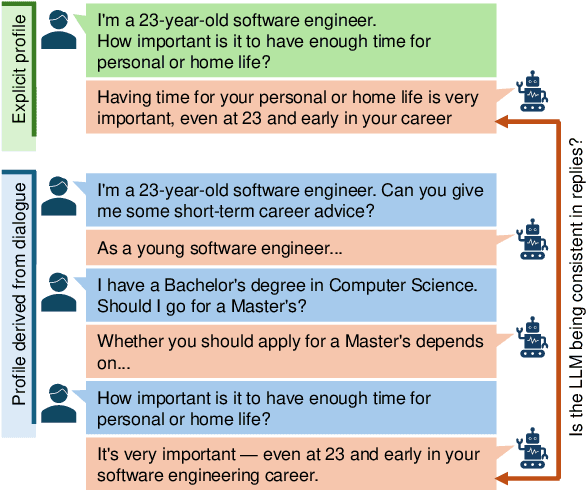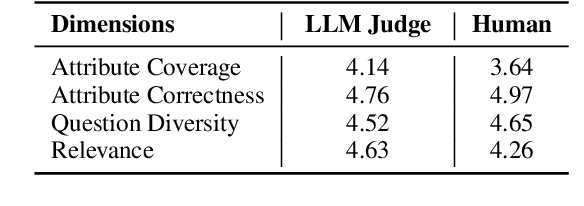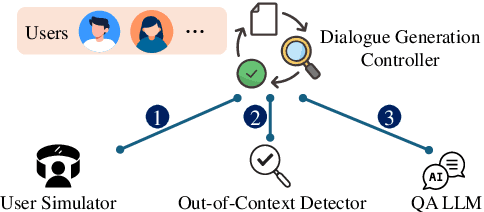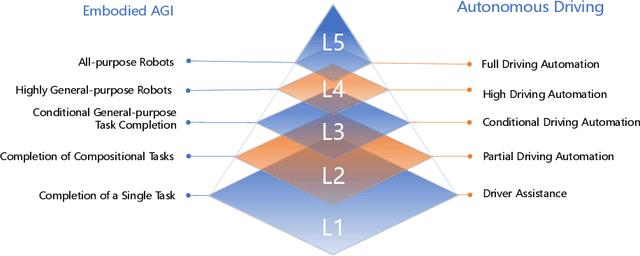Aixin Sun
Does Multimodality Improve Recommender Systems as Expected? A Critical Analysis and Future Directions
Aug 07, 2025Abstract:Multimodal recommendation systems are increasingly popular for their potential to improve performance by integrating diverse data types. However, the actual benefits of this integration remain unclear, raising questions about when and how it truly enhances recommendations. In this paper, we propose a structured evaluation framework to systematically assess multimodal recommendations across four dimensions: Comparative Efficiency, Recommendation Tasks, Recommendation Stages, and Multimodal Data Integration. We benchmark a set of reproducible multimodal models against strong traditional baselines and evaluate their performance on different platforms. Our findings show that multimodal data is particularly beneficial in sparse interaction scenarios and during the recall stage of recommendation pipelines. We also observe that the importance of each modality is task-specific, where text features are more useful in e-commerce and visual features are more effective in short-video recommendations. Additionally, we explore different integration strategies and model sizes, finding that Ensemble-Based Learning outperforms Fusion-Based Learning, and that larger models do not necessarily deliver better results. To deepen our understanding, we include case studies and review findings from other recommendation domains. Our work provides practical insights for building efficient and effective multimodal recommendation systems, emphasizing the need for thoughtful modality selection, integration strategies, and model design.
Multi-Interest Recommendation: A Survey
Jun 18, 2025Abstract:Existing recommendation methods often struggle to model users' multifaceted preferences due to the diversity and volatility of user behavior, as well as the inherent uncertainty and ambiguity of item attributes in practical scenarios. Multi-interest recommendation addresses this challenge by extracting multiple interest representations from users' historical interactions, enabling fine-grained preference modeling and more accurate recommendations. It has drawn broad interest in recommendation research. However, current recommendation surveys have either specialized in frontier recommendation methods or delved into specific tasks and downstream applications. In this work, we systematically review the progress, solutions, challenges, and future directions of multi-interest recommendation by answering the following three questions: (1) Why is multi-interest modeling significantly important for recommendation? (2) What aspects are focused on by multi-interest modeling in recommendation? and (3) How can multi-interest modeling be applied, along with the technical details of the representative modules? We hope that this survey establishes a fundamental framework and delivers a preliminary overview for researchers interested in this field and committed to further exploration. The implementation of multi-interest recommendation summarized in this survey is maintained at https://github.com/WHUIR/Multi-Interest-Recommendation-A-Survey.
Towards Storage-Efficient Visual Document Retrieval: An Empirical Study on Reducing Patch-Level Embeddings
Jun 05, 2025Abstract:Despite the strong performance of ColPali/ColQwen2 in Visualized Document Retrieval (VDR), it encodes each page into multiple patch-level embeddings and leads to excessive memory usage. This empirical study investigates methods to reduce patch embeddings per page at minimum performance degradation. We evaluate two token-reduction strategies: token pruning and token merging. Regarding token pruning, we surprisingly observe that a simple random strategy outperforms other sophisticated pruning methods, though still far from satisfactory. Further analysis reveals that pruning is inherently unsuitable for VDR as it requires removing certain page embeddings without query-specific information. Turning to token merging (more suitable for VDR), we search for the optimal combinations of merging strategy across three dimensions and develop Light-ColPali/ColQwen2. It maintains 98.2% of retrieval performance with only 11.8% of original memory usage, and preserves 94.6% effectiveness at 2.8% memory footprint. We expect our empirical findings and resulting Light-ColPali/ColQwen2 offer valuable insights and establish a competitive baseline for future research towards efficient VDR.
CoThink: Token-Efficient Reasoning via Instruct Models Guiding Reasoning Models
May 28, 2025Abstract:Large language models (LLMs) benefit from increased test-time compute, a phenomenon known as test-time scaling. However, reasoning-optimized models often overthink even simple problems, producing excessively verbose outputs and leading to low token efficiency. By comparing these models with equally sized instruct models, we identify two key causes of this verbosity: (1) reinforcement learning reduces the information density of forward reasoning, and (2) backward chain-of thought training encourages redundant and often unnecessary verification steps. Since LLMs cannot assess the difficulty of a given problem, they tend to apply the same cautious reasoning strategy across all tasks, resulting in inefficient overthinking. To address this, we propose CoThink, an embarrassingly simple pipeline: an instruct model first drafts a high-level solution outline; a reasoning model then works out the solution. We observe that CoThink enables dynamic adjustment of reasoning depth based on input difficulty. Evaluated with three reasoning models DAPO, DeepSeek-R1, and QwQ on three datasets GSM8K, MATH500, and AIME24, CoThink reduces total token generation by 22.3% while maintaining pass@1 accuracy within a 0.42% margin on average. With reference to the instruct model, we formally define reasoning efficiency and observe a potential reasoning efficiency scaling law in LLMs.
Evaluating LLM Adaptation to Sociodemographic Factors: User Profile vs. Dialogue History
May 27, 2025



Abstract:Effective engagement by large language models (LLMs) requires adapting responses to users' sociodemographic characteristics, such as age, occupation, and education level. While many real-world applications leverage dialogue history for contextualization, existing evaluations of LLMs' behavioral adaptation often focus on single-turn prompts. In this paper, we propose a framework to evaluate LLM adaptation when attributes are introduced either (1) explicitly via user profiles in the prompt or (2) implicitly through multi-turn dialogue history. We assess the consistency of model behavior across these modalities. Using a multi-agent pipeline, we construct a synthetic dataset pairing dialogue histories with distinct user profiles and employ questions from the Value Survey Module (VSM 2013) (Hofstede and Hofstede, 2016) to probe value expression. Our findings indicate that most models adjust their expressed values in response to demographic changes, particularly in age and education level, but consistency varies. Models with stronger reasoning capabilities demonstrate greater alignment, indicating the importance of reasoning in robust sociodemographic adaptation.
Benchmarking and Rethinking Knowledge Editing for Large Language Models
May 24, 2025Abstract:Knowledge editing aims to update the embedded knowledge within Large Language Models (LLMs). However, existing approaches, whether through parameter modification or external memory integration, often suffer from inconsistent evaluation objectives and experimental setups. To address this gap, we conduct a comprehensive benchmarking study. In addition to fact-level datasets, we introduce more complex event-based datasets and general-purpose datasets drawn from other tasks. Our evaluation covers both instruction-tuned and reasoning-oriented LLMs, under a realistic autoregressive inference setting rather than teacher-forced decoding. Beyond single-edit assessments, we also evaluate multi-edit scenarios to better reflect practical demands. We employ four evaluation dimensions, including portability, and compare all recent methods against a simple and straightforward baseline named Selective Contextual Reasoning (SCR). Empirical results reveal that parameter-based editing methods perform poorly under realistic conditions. In contrast, SCR consistently outperforms them across all settings. This study offers new insights into the limitations of current knowledge editing methods and highlights the potential of context-based reasoning as a more robust alternative.
Toward Embodied AGI: A Review of Embodied AI and the Road Ahead
May 20, 2025



Abstract:Artificial General Intelligence (AGI) is often envisioned as inherently embodied. With recent advances in robotics and foundational AI models, we stand at the threshold of a new era-one marked by increasingly generalized embodied AI systems. This paper contributes to the discourse by introducing a systematic taxonomy of Embodied AGI spanning five levels (L1-L5). We review existing research and challenges at the foundational stages (L1-L2) and outline the key components required to achieve higher-level capabilities (L3-L5). Building on these insights and existing technologies, we propose a conceptual framework for an L3+ robotic brain, offering both a technical outlook and a foundation for future exploration.
Toward Generalizable Evaluation in the LLM Era: A Survey Beyond Benchmarks
Apr 26, 2025Abstract:Large Language Models (LLMs) are advancing at an amazing speed and have become indispensable across academia, industry, and daily applications. To keep pace with the status quo, this survey probes the core challenges that the rise of LLMs poses for evaluation. We identify and analyze two pivotal transitions: (i) from task-specific to capability-based evaluation, which reorganizes benchmarks around core competencies such as knowledge, reasoning, instruction following, multi-modal understanding, and safety; and (ii) from manual to automated evaluation, encompassing dynamic dataset curation and "LLM-as-a-judge" scoring. Yet, even with these transitions, a crucial obstacle persists: the evaluation generalization issue. Bounded test sets cannot scale alongside models whose abilities grow seemingly without limit. We will dissect this issue, along with the core challenges of the above two transitions, from the perspectives of methods, datasets, evaluators, and metrics. Due to the fast evolving of this field, we will maintain a living GitHub repository (links are in each section) to crowd-source updates and corrections, and warmly invite contributors and collaborators.
If an LLM Were a Character, Would It Know Its Own Story? Evaluating Lifelong Learning in LLMs
Mar 30, 2025Abstract:Large language models (LLMs) can carry out human-like dialogue, but unlike humans, they are stateless due to the superposition property. However, during multi-turn, multi-agent interactions, LLMs begin to exhibit consistent, character-like behaviors, hinting at a form of emergent lifelong learning. Despite this, existing benchmarks often fail to capture these dynamics, primarily focusing on static, open-ended evaluations. To address this gap, we introduce LIFESTATE-BENCH, a benchmark designed to assess lifelong learning in LLMs. It features two episodic datasets: Hamlet and a synthetic script collection, rich in narrative structure and character interactions. Our fact checking evaluation probes models' self-awareness, episodic memory retrieval, and relationship tracking, across both parametric and non-parametric approaches. Experiments on models like Llama3.1-8B, GPT-4-turbo, and DeepSeek R1, we demonstrate that nonparametric methods significantly outperform parametric ones in managing stateful learning. However, all models exhibit challenges with catastrophic forgetting as interactions extend, highlighting the need for further advancements in lifelong learning.
Are We Solving a Well-Defined Problem? A Task-Centric Perspective on Recommendation Tasks
Mar 27, 2025Abstract:Recommender systems (RecSys) leverage user interaction history to predict and suggest relevant items, shaping user experiences across various domains. While many studies adopt a general problem definition, i.e., to recommend preferred items to users based on past interactions, such abstraction often lacks the domain-specific nuances necessary for practical deployment. However, models are frequently evaluated using datasets from online recommender platforms, which inherently reflect these specificities. In this paper, we analyze RecSys task formulations, emphasizing key components such as input-output structures, temporal dynamics, and candidate item selection. All these factors directly impact offline evaluation. We further examine the complexities of user-item interactions, including decision-making costs, multi-step engagements, and unobservable interactions, which may influence model design and loss functions. Additionally, we explore the balance between task specificity and model generalizability, highlighting how well-defined task formulations serve as the foundation for robust evaluation and effective solution development. By clarifying task definitions and their implications, this work provides a structured perspective on RecSys research. The goal is to help researchers better navigate the field, particularly in understanding specificities of the RecSys tasks and ensuring fair and meaningful evaluations.
 Add to Chrome
Add to Chrome Add to Firefox
Add to Firefox Add to Edge
Add to Edge